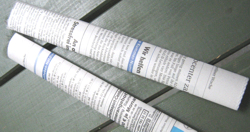
Sometimes you need folded paper strips of the same width, when weaving paper baskets e.g., making a magazine purse or perhaps when making accordion folds.
Making those strips can be a time-consuming and frustrating experience – but it can be very fast and easy as well: Once I read somewhere (unfortunately I don’t remember where exactly) that you only have to roll your paper sheet over a dowel and then flat the paper roll.
Easy peasy, isn’t it? ;-)
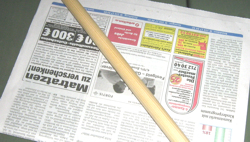 You need your sheet of paper and a dowel.
You need your sheet of paper and a dowel.
I used here one of my giant knitting needles.
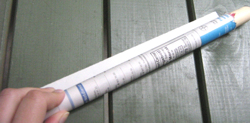 Roll your sheet of paper on the dowel.
Roll your sheet of paper on the dowel.
 Pull the dowel out of the roll and flatten the paper roll.
Pull the dowel out of the roll and flatten the paper roll.
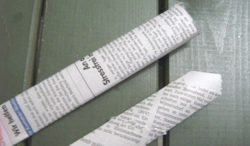 This way you get paper strips which are of the same width over the whole length.
This way you get paper strips which are of the same width over the whole length.
Once I made a bowl like these magazine bowls. I preferred the ends of my paper strips to be thinner then the center, so that everything is about the same width everywhere.
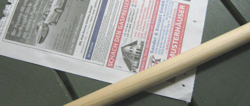 Roll your sheet of paper diagonally on the dowel.
Roll your sheet of paper diagonally on the dowel.
 The paper roll gets longer, but the ends are thinner than the center.
The paper roll gets longer, but the ends are thinner than the center.
You can now overlap the strips and create a strong bowl.
Links:
Paper woven basket
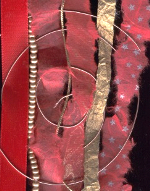

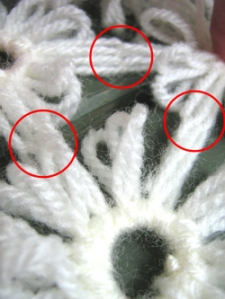 One thing I found out is that I love the little flowers much more without any edging. Therefore I’m joining them while working.
One thing I found out is that I love the little flowers much more without any edging. Therefore I’m joining them while working. The other thing I played around with is another cardboard loom. In my
The other thing I played around with is another cardboard loom. In my 
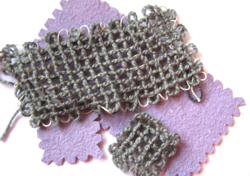





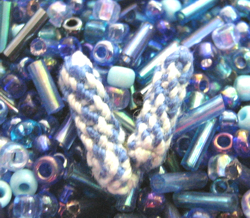
 Therefore I figured out how to make my own Kumihimo beads.
Therefore I figured out how to make my own Kumihimo beads.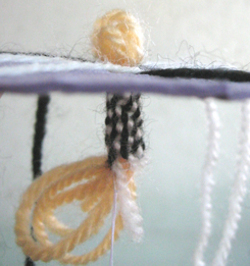 What to do:
What to do: The Kumihimo beads are from fabric and can be stitched however you want. On this photo I surrounded my Kumihimo bead by seed beads and made a kind of
The Kumihimo beads are from fabric and can be stitched however you want. On this photo I surrounded my Kumihimo bead by seed beads and made a kind of